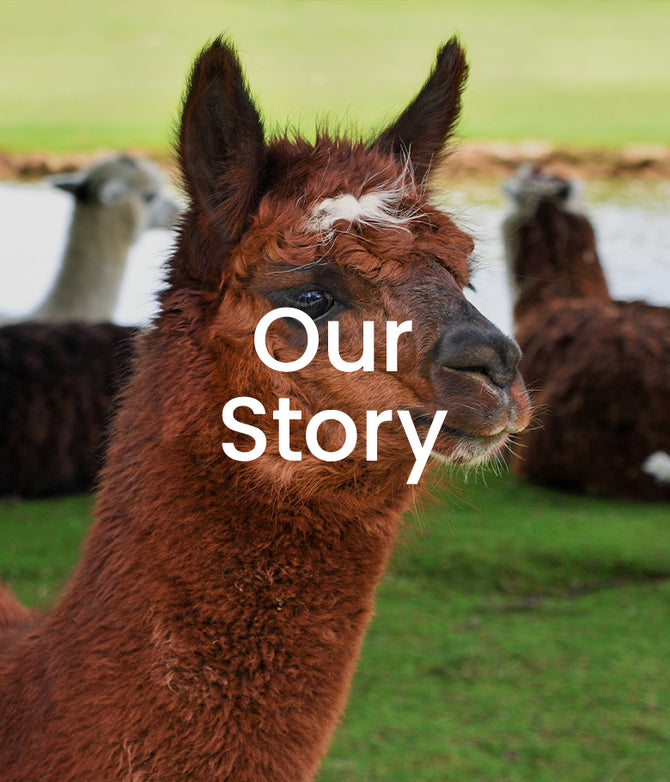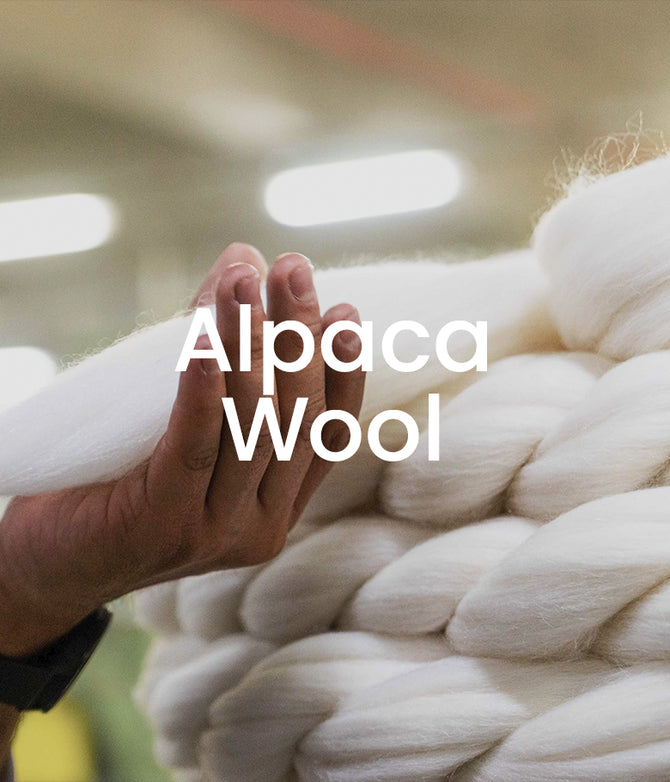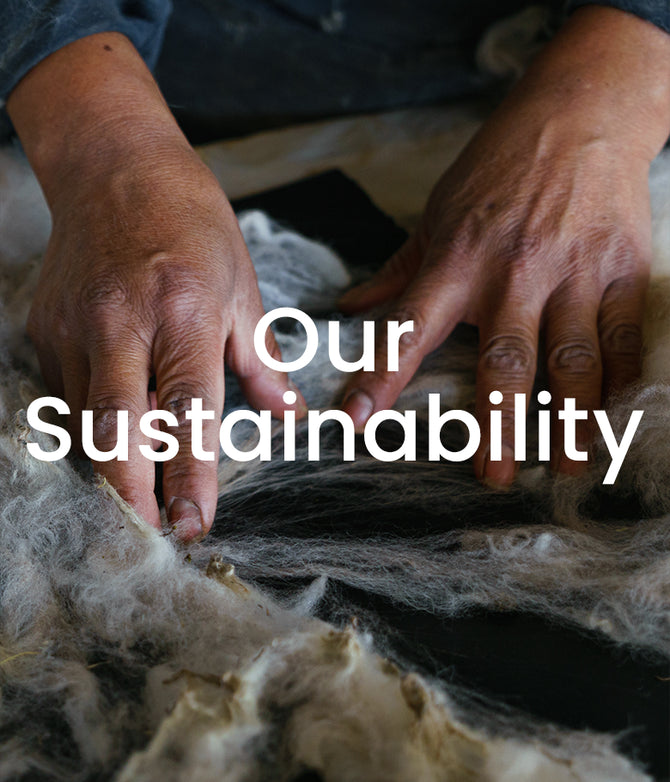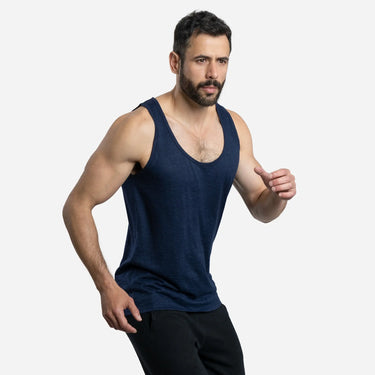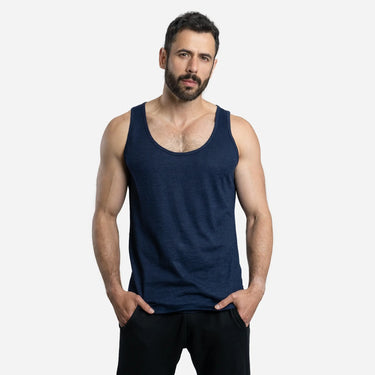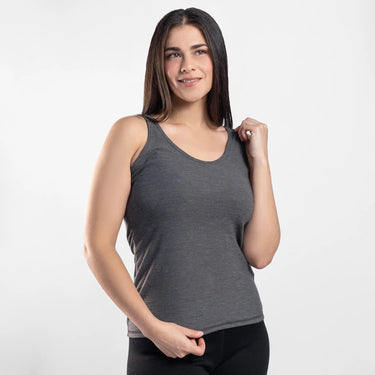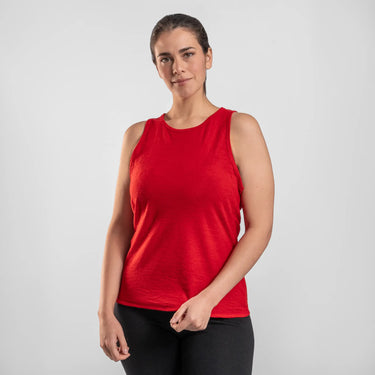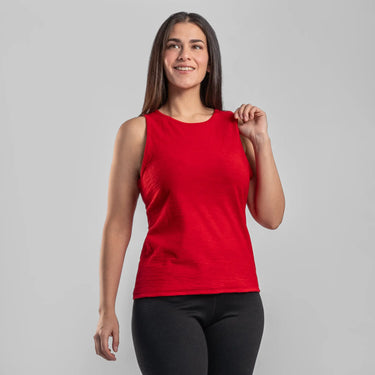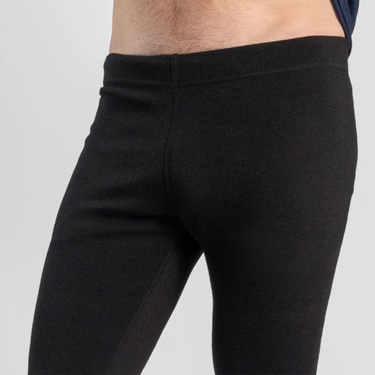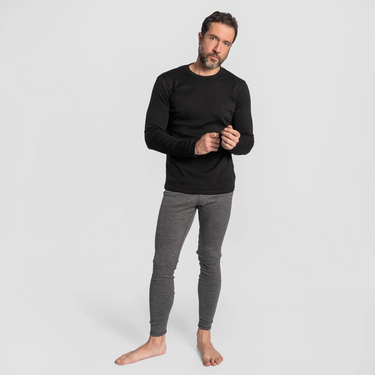Superwash vs Alpaca Wool:
Environmental & Health Impacts
Published July 10, 2025
1. Say Goodbye to Single-Use Plastics
Single-use plastics are a huge environmental problem, but small tweaks in your daily habits can make a big difference:
- Bring reusable bags: Make or buy groceries and produce bags to use instead of plastic ones. Keep them by the door or in your car so you never forget them.
- Ditch bottled water: Invest in a reusable water bottle [1]. If tap water isn’t safe, boil or filter it instead.
- Carry a reusable coffee cup: Even “eco-friendly” disposable cups create waste if not disposed of properly.
- Pack a zero-waste kit: Include bamboo or metal cutlery, a reusable straw, and a container for takeout. It might take practice, but soon it’ll feel natural.
2. Use Less Water and Energy
Every drop counts, and every watt matters. Here are a few small changes to reduce your footprint:
- Shorten your showers: A quick shower saves both water and energy. Bonus: it’s better for your skin too! [2]
- Turn off the lights: Unplug appliances and switch off lights when you’re not using them [3].
- Hang clothes to dry: Whenever possible, skip the dryer and hang your clothes. It’s gentler on fabrics and the planet.
- Flush smarter: If your toilet has an eco-flush option, use it. No eco-flush? Place a filled bottle in the tank to reduce water per flush.
At Arms of Andes we make our gear from 100% Royal Alpaca Wool of 18-18.5 microns.
3. Make Eco-Conscious Food Choices
Food is one of the easiest ways to live more sustainably:
- Buy local and seasonal: This reduces transportation emissions and supports local farmers [4].
- Cook from scratch: Homemade meals usually come with less packaging and waste.
- Be mindful about meat: Choose ethically raised options, like free-range chicken or grass-fed beef, and support sustainable farming practices. Exploring plant-based meals occasionally can also make a difference [5].
- Opt for sustainable groceries: Shop at packaging-free or bulk stores. No access? Buy in bulk at your regular store to minimize waste.
4. Rethink Your Transportation Habits
How you get around affects your carbon footprint. Start small:
- Walk or bike more: Even once a week can make a difference.
- Use public transport: Replace car trips with bus or train rides when possible [9].
- Carpool: Sharing rides with colleagues or friends reduces emissions.
- Fly less: For shorter trips, consider buses or trains. Offset your carbon emissions for long flights.
5. Choose Sustainable Fashion
The fashion industry is one of the largest polluters, but your wardrobe can make a difference:
- Avoid fast fashion: Look for quality over quantity. Cheaper often means corners were cut in ethics and sustainability.
- Buy second hand: Thrift stores and online resale platforms are great for finding unique, affordable items.
- Support eco-conscious brands: Do your research and choose brands that prioritize sustainability, like Arms of Andes, which uses 100% alpaca wool and natural dyes [6].
- Host clothing swaps: A fun way to give new life to unused items in your closet [7].

6. Upgrade Your Hygiene and Cleaning Habits
Small changes to your personal care and cleaning routines can have a big impact:
- Switch to bamboo* toothbrushes: Look for ones with compostable bristles and packaging.
- Choose steel razors: A durable, waste-free alternative to disposable razors.
- Use natural options: Biodegradable shampoos, soaps, and detergents are better for the planet.
- Use menstrual cups and fabric sanitary towels: They take a little getting used to, but you won’t go back when you do!
- Clean with vinegar and baking soda: These simple ingredients work wonders around the house and are free of harmful chemicals [8].
* When choosing products made from bamboo, try to ensure the bamboo comes from sustainable sources.
7. Embrace Nature and DIY Solutions
Spending time outdoors and trying DIY solutions are both fun and sustainable:
- Grow your own vegetables: Even a small herb garden on a windowsill can make a difference.
- Start composting: Turn food scraps into nutrient-rich compost for your garden. No garden? Check if your city collects food waste.
- Connect with nature: Spending time outside reduces stress and reminds us why protecting the planet matters.
- Join community initiatives: Participate in clean-ups or tree-planting events.
8. Be Mindful About Waste
Rethinking how you handle waste is key to sustainable living:
- Reuse before you recycle: Find new uses for things before throwing them away.
- Donate or swap: Let someone else enjoy what you no longer need.
- Avoid expedited shipping: One-day deliveries often mean more vehicles on the road, increasing emissions.
Sustainable living starts with REDUCING waste, REPAIRING and/or REUSING broken/unused items, before RECYCLING or, when possible, COMPOSTING them.
Why Small Steps Matter
You might think, “Will my tiny changes really help?” The answer is yes. If everyone made just one or two of these adjustments, the collective impact would be enormous. And remember, you don’t have to do everything at once. Pick a couple of these tips to start with, and add more as you go. Before you know it, living sustainably will feel like second nature.
So, are you ready to make 2024 your most sustainable year yet? Small steps today can lead to a greener tomorrow. Let’s get started—one habit at a time!

At Arms of Andes we make our gear from 100% Royal Alpaca Wool of 18-18.5 microns.
Reading time: 6 minutes
By Jordy Munarriz
Superwash wool refers to wool fibers that have undergone chemical treatments or coatings to make them machine-washable and shrink-resistant. This process, widely used in mass-market merino wool products, aims to eliminate the felting and shrinkage that naturally occur when untreated wool is exposed to agitation and heat.
Marketed as “easy care”, superwash merino wool is popular in athletic wear, children’s garments, and socks due to its low-maintenance appeal. But behind that convenience is a multi-step industrial process that transforms a natural fiber into something far from its original form.
How Superwash Wool Is Made
The superwash process typically involves two main steps, which may be used separately or combined:
Chlorination (Chemical Etching)
This step involves treating the wool with chlorine-based compounds such as sodium hypochlorite or gaseous chlorine. This chemical bath oxidizes and removes the natural outer layer of wool—the cuticle scales—which are responsible for felting.
- Chlorination produces adsorbable organic halides (AOX), a class of toxic by-products that are persistent in aquatic ecosystems and potentially carcinogenic to humans [1,2,3].
- Chlorine gas is a hazardous chemical with significant occupational and environmental risks [3,4].
Polymer Coating (Resin Layer)
After chlorination, the fiber is coated with a synthetic polymer—commonly Hercosett 125 (a polyamide-epichlorohydrin resin) [3]. This layer prevents the fibers from interlocking, making the wool smoother and resistant to felting during washing.
- Environmental and health concerns: Hercosett resin contains epichlorohydrin, a known mutagen and probable human carcinogen. Numerous studies have shown that epichlorohydrin is a potent mutagen, capable of inducing chromosomal aberrations and DNA mutations in exposed animal and human cells, as well as DNA damage in bacteria and yeast [5,6].
- Toxicological evidence: Epichlorohydrin induces tumors in animal models and has shown carcinogenic effects in experimentally exposed tissues. In humans, occupational exposure is associated with increased chromosomal abnormalities and possible cancer risks, though epidemiological evidence remains limited [5,6,7].
Moreover, the resin coating is not biodegradable, contributing to microplastic pollution when garments shed fibers during washing and wear [8].



6. Upgrade Your Hygiene and Cleaning Habits
Small changes to your personal care and cleaning routines can have a big impact:
- Switch to bamboo* toothbrushes: Look for ones with compostable bristles and packaging.
- Choose steel razors: A durable, waste-free alternative to disposable razors.
- Use natural options: Biodegradable shampoos, soaps, and detergents are better for the planet.
- Use menstrual cups and fabric sanitary towels: They take a little getting used to, but you won’t go back when you do!
- Clean with vinegar and baking soda: These simple ingredients work wonders around the house and are free of harmful chemicals [8].
* When choosing products made from bamboo, try to ensure the bamboo comes from sustainable sources.
7. Embrace Nature and DIY Solutions
Spending time outdoors and trying DIY solutions are both fun and sustainable:
- Grow your own vegetables: Even a small herb garden on a windowsill can make a difference.
- Start composting: Turn food scraps into nutrient-rich compost for your garden. No garden? Check if your city collects food waste.
- Connect with nature: Spending time outside reduces stress and reminds us why protecting the planet matters.
- Join community initiatives: Participate in clean-ups or tree-planting events.
At Arms of Andes we make our gear from 100% Royal Alpaca Wool of 18-18.5 microns.
Environmental and Structural Impacts of Superwash Wool
While Superwash wool offers convenience, the process fundamentally alters both the performance and environmental profile of the fiber.
Environmental Impact
- Chlorinated wastewater: Superwash treatments often involve chlorine, generating AOX (adsorbable organic halides)—toxic, persistent pollutants harmful to aquatic life and capable of bioaccumulating in food chains [2,3,9].
- Plastic resin coatings: The commonly used Hercosett resin, derived from petrochemicals, is non-biodegradable. With wear and washing, it sheds microplastics into water and soil [3].
- High resource consumption: The process requires significant water, energy, and chemicals—not only for chlorination but also for repeated rinsing and polymer application [9].
Aesthetic & Structural Changes
- Loss of insulation and thermoregulation: The smooth resin surface reduces the fiber’s ability to trap air, undermining wool’s natural thermal regulation [9].
- Reduced moisture-wicking: The polymer coating impairs breathability, limiting the fiber’s ability to manage humidity and skin comfort [10,11].
- Artificial, glossy appearance: Superwashed wool loses its natural matte finish and develops a plastic-like sheen, distancing it from its organic origin [12,13].
- Reduced elasticity: With repeated laundering, Superwash wool may stretch out or lose shape, especially in fine knits [12].
- Altered tactile experience: The coating creates a slick surface that resembles synthetic fabrics, reducing wool’s softness and friction-based warmth [13,14].
- Lower biodegradability: The synthetic resin prevents natural decomposition, disqualifying the fiber from compostability certifications [14,15].
- Altered tactile and skin interaction: The coated fiber behaves less like natural wool, affecting how it feels on the skin and its ability to regulate microclimate and odor [16].

Why the Industry Relies on It
The commercial success of Superwash wool stems from its ability to meet modern consumer expectations—ease of care, machine-washability, and durability. Traditionally, wool required special handling due to its tendency to shrink and felt when agitated in water. This discouraged buyers and limited its use in mass-market apparel. The Superwash process addressed these limitations through chemical and polymer treatments that alter the fiber surface.
Key industry advantages include:
- Shrink-Resistant Wool: The removal or smoothing of surface scales and subsequent polymer coating prevent felting, making garments safe for machine washing and drying [16].
- Color-Fast Fabrics: Treated wool absorbs dyes more uniformly and intensely, increasing color saturation and reducing fading in industrial laundering [17].
- High Volume Output: The process aligns with large-scale industrial systems, allowing manufacturers to integrate wool into fast fashion pipelines without sacrificing efficiency [18].
These transformations highlight the trade-offs involved: a natural, regenerative fiber is chemically altered to fit industrial systems—at the cost of its unique, sustainable qualities.
The Arms of Andes Commitment to Plastic-free Alpaca Wool
At Arms of Andes, we use 100% Alpaca Wool sourced directly from the Andes of Peru. Unlike sheep wool, alpaca fibers are naturally lanolin-free, have fewer surface scales, and are less prone to felting. This means we don’t need chemical treatments to achieve durability or softness.
Natural Structure Reduces Felting
Alpaca wool has a smooth surface with lower scale height, which reduces friction and prevents fibers from locking during washing. Unlike sheep wool, it doesn’t require chlorine treatment or plastic coatings to remain usable.
Natural Performance Intact
Alpaca wool retains: High thermal insulation, breathability. antibacterial and odor resistance, and hypoallergenic softness.
When left untreated, alpaca wool performs as nature intended—without sacrificing function.
100% Biodegradable: No Plastic, No Superwash
All Arms of Andes garments are fully biodegradable. By avoiding Hercosett resins, we ensure our products can return to the earth after their lifecycle, aligning with circular economy goals.
At Arms of Andes we make our gear from 100% Royal Alpaca Wool of 18-18.5 microns.
160 UltralightWomen's Alpaca Wool
Hiking T-Shirt
160 Ultralight
Relaxed FitWomen's Alpaca Wool Leggings 300
Lightweight

For snowboarders, skiers, and winter hikers, weight matters. Every gram counts when you're climbing, carrying gear, or navigating the slopes. Alpaca wool’s unique insulation properties allow for lightweight warmth, meaning you stay protected without unnecessary bulk.
Five Reasons to Choose Alpaca Wool for Snow Sports
Alpaca wool is the ultimate base and mid layer material for tackling the demands of skiing and snowboarding. Its unique properties make it an exceptional choice for base and mid layers, ensuring comfort and performance on the slopes.
1. Exceptional Warmth
Alpaca wool fibers feature semi-hollow cores, providing incredible insulation. Combined with their natural crimp (waviness), these fibers trap heat efficiently,
2. Breathable and Moisture-Wicking
One of alpaca wool’s standout qualities is its ability to wick moisture away from your skin while remaining highly breathable. This means you stay dry and comfortable, even during intense physical activity. Alpaca wool base layers, such as leggings and shirts, excel in keeping you warm and sweat-free.
3. Temperature Regulation
Alpaca wool’s unique ability to balance warmth and breathability helps regulate your body temperature. Whether you're racing downhill or waiting for the ski lift, alpaca wool keeps you warm in the cold and prevents overheating during activity.
4. Lightweight and Flexible
Thanks to its excellent insulating properties, alpaca wool keeps you warm without adding bulk. This lightweight quality ensures freedom of movement—crucial for maintaining balance and agility on the slopes.
At Arms of Andes we make our gear from 100% Royal Alpaca Wool of 18-18.5 microns.
Men's Alpaca Wool Jacket
420 Midweight Full-Zip

Relatedcontent
Bamboo:
A fast-growing plant often used for making sustainable products like toothbrushes and cutlery.
Biodegradable:
Materials that can break down naturally without harming the environment.
Bulk stores:
Shops where you can buy products in large quantities, often with minimal packaging.
Carbon footprint:
The total amount of greenhouse gases produced directly or indirectly by human activities.
Composting:
A process where organic waste decomposes into nutrient-rich material for gardening.
Ethically raised:
Livestock or poultry that is raised in humane and environmentally responsible ways.
Fast fashion:
Cheap, mass-produced clothing often linked to environmental and ethical issues.
Natural dyes:
Coloring substances derived from plants, animals, or minerals, used to color fabrics sustainably.
| Feature | Superwash Wool (e.g., Merino) | Untreated Alpaca Wool | Consequences |
|---|---|---|---|
| Common Fibers Treated | Merino wool, sheep wool blends | Not applicable | Primarily targets high-scale fibers |
| Chemical Treatment | Chlorine oxidation, resin coating | None | Toxic by-products, microplastics |
| Water Use | Very high | Low | Contributes to wastewater load |
| Environmental Impact | Very high | Low | AOX, microplastic pollution |
| Biodegradability | Low (due to resin coating) | 100% | Resin persists in soil/ocean |
| Natural Odor Control | Diminished | Strong | Resin disrupts natural properties |
How to Care for Natural Alpaca Wool
No Superwash? No problem. Here’s how to care for your natural alpaca wool garments:
- Air Out: Between wears, hang in a dry, shaded area to refresh.
- Cold Wash: Hand wash or machine wash in cold water on wool cycle.
- Mild Detergent: Use neutral pH detergent free of enzymes and bleach.
- Dry Flat: Reshape while damp and dry flat away from heat.
- Avoid Agitation: Never tumble dry, wring, or expose to hot water.
With these simple steps, your alpaca clothing will last for years—even with frequent use outdoors.

FAQ
- Is Superwash Wool Toxic?
Residues of chlorine and plastic resin may cause irritation or long-term harm, especially for those with sensitive skin or allergies.
- Does Superwash Shed Microplastics?
Yes. Polymer coatings degrade with use and laundering, releasing particles into the environment. - Is Alpaca Wool Harder to Care For?
No. When treated gently, it resists odor and wear better than many other fibers. Cold washing and air drying are usually sufficient. - Does Superwash Make Wool Better for Outdoor Use?
Not necessarily. Untreated alpaca outperforms chemically altered fibers in insulation, breathability, and environmental safety.


Glossarykeywords
AOX (Adsorbable Organic Halides):
A class of toxic, persistent pollutants formed during chlorination. Harmful to aquatic life and capable of bioaccumulation.
Chlorination:
A chemical process using chlorine or chlorine compounds (e.g., sodium hypochlorite) to etch away the natural cuticle layer of wool fibers, reducing felting.
Epichlorohydrin:
A toxic, likely carcinogenic compound used in Hercosett resin. Linked to chromosomal mutations and long-term health risks.
Felting:
The tangling of wool fibers when exposed to heat, moisture, and agitation. Superwash treatment prevents this, but alpaca wool resists felting naturally due to its fiber structure.
Hercosett 125:
A widely used synthetic resin that binds to wool fibers in the Superwash process. Derived from petrochemicals and contributes to microplastic pollution.
Lanolin:
A natural oil found in sheep wool. Alpaca wool contains little to no lanolin, making it more hypoallergenic and odor-resistant.
Microplastics:
Tiny plastic particles that shed from synthetic or coated textiles during washing. They accumulate in waterways and marine life.
Polymer Coating (Resin Layer):
A synthetic plastic film applied to wool after chlorination to smooth the fiber and prevent shrinkage. Often made from Hercosett 125, a polyamide-epichlorohydrin resin.
Superwash Wool:
Wool that has undergone chemical treatment and/or polymer coating to make it machine-washable and shrink-resistant. Typically involves chlorination and a synthetic resin coating.
At Arms of Andes we use the finest Royal Alpaca Wool sourced in the Peruvian Andes. The Andean alpacas naturally developed over thousands of years in harsh conditions in high altitudes, creating the perfect fiber for outdoor gear that helps you stay protected in all conditions. Discover our outdoor apparel.

In the textile industry, companies that produce garments made entirely from Merino wool typically use fibers that are 17.5 microns or finer to minimize any itchiness or roughness, [4] ensuring comfort for their customers. A study conducted by the Division of Dermatology at the University of Louisville in 2019 evaluated the effects of wearing these garments on individuals with skin sensitivities, such as atopic dermatitis or eczema. In the study, 25 participants wore only Merino wool garments of 17.5 microns for six weeks and cotton garments of 21 microns for six weeks more, while another group of 25 followed the reverse order. Participants reported significant changes when switching from cotton to Merino wool, with those who started in Merino wool experiencing a decrease in their eczema during the first weeks. [4]
| Properties | Royal Alpaca Wool | Cashmere | Merino Wool |
|---|---|---|---|
| Weight | Lightest | Light | Heavier |
| Fiber Structure | Semi-Hollow | Solid | Solid |
| Thermal Capacity | 5 x Warmer | 3 x Warmer | Warm |
| Water Retention | Absorbs 10% of weight | Shrinks in water | Absorbs 10%
of weight |
| UV Protection | Yes | Yes | Yes |
| Fiber Scales | Smoothest | Softest | Prickly |
| Microns (average) | 17.5 | 14 | 18 |
| Tensile Strength | Highest | Weak | High |
| Odor Resistance | Yes | Yes | Yes |
| Wrinkle Resistance | Yes | Yes | Yes |
| Hypoallergenic (Lanolin free) | Yes | Yes | No |
The Final Verdict: And the Winner Is...
After a comprehensive analysis of alpaca, merino, and cashmere, it's clear that cashmere, while undeniably luxurious, lacks the durability required for outdoor garments. However, it excels as a high-end fiber for special occasions and elegant attire.
In the head-to-head battle between alpaca and merino, alpaca emerges as the undisputed champion! Alpaca wool surpasses merino in warmth, lightness, softness, and strength. It's the ultimate choice for those seeking performance, comfort, and sustainability.
Authors & Researchers

Jordy Munarriz
Environmental Engineer with a master’s degree in renewable energy and a specialization in sustainability. A passionate traveler and advocate for responsible tourism, he captures the essence of exploration through storytelling, inspiring others to connect with nature in a conscious and meaningful way.
Authors & Researchers

Jordy Munarriz
Environmental Engineer with a master’s degree in renewable energy and a specialization in sustainability. A passionate traveler and advocate for responsible tourism, he captures the essence of exploration through storytelling, inspiring others to connect with nature in a conscious and meaningful way.
Alpaca wool (particularly the royal and baby alpaca fiber grades) is non-itchy, warm, and performs better than merino and other types of sheep's wool. This makes alpaca wool perfect for your outdoor clothing, slipper socks, and even underwear.

Glossarykeywords
AOX (Adsorbable Organic Halides):
A class of toxic, persistent pollutants formed during chlorination. Harmful to aquatic life and capable of bioaccumulation.
Chlorination:
A chemical process using chlorine or chlorine compounds (e.g., sodium hypochlorite) to etch away the natural cuticle layer of wool fibers, reducing felting.
Epichlorohydrin:
A toxic, likely carcinogenic compound used in Hercosett resin. Linked to chromosomal mutations and long-term health risks.
Felting:
The tangling of wool fibers when exposed to heat, moisture, and agitation. Superwash treatment prevents this, but alpaca wool resists felting naturally due to its fiber structure.
Hercosett 125:
A widely used synthetic resin that binds to wool fibers in the Superwash process. Derived from petrochemicals and contributes to microplastic pollution.
Lanolin:
A natural oil found in sheep wool. Alpaca wool contains little to no lanolin, making it more hypoallergenic and odor-resistant.
Microplastics:
Tiny plastic particles that shed from synthetic or coated textiles during washing. They accumulate in waterways and marine life.
Polymer Coating (Resin Layer):
A synthetic plastic film applied to wool after chlorination to smooth the fiber and prevent shrinkage. Often made from Hercosett 125, a polyamide-epichlorohydrin resin.
Superwash Wool:
Wool that has undergone chemical treatment and/or polymer coating to make it machine-washable and shrink-resistant. Typically involves chlorination and a synthetic resin coating.
References:
[1] Rodie, J. B. (2016). Quality fabric of the month: Sustainable machine-washable wool. Textile World. https://www.textileworld.com/textile-world/quality-fabric-of-the-month/2016/02/quality-fabric-of-the-month-sustainable-machine-washable-wool/
[2] Browne, M. A., Crump, P., Niven, S. J., Teuten, E., Tonkin, A., Galloway, T., & Thompson, R. (2011). Accumulation of microplastic on shorelines worldwide: Sources and sinks. Environmental Science & Technology, 45(21), 9175–9179. https://doi.org/10.1021/es201811s
[3] Hassan, M. M., & Carr, C. M. (2019). A review of the sustainable methods in imparting shrink resistance to wool fabrics. Journal of Advanced Research, 18, 39–60. https://doi.org/10.1016/j.jare.2019.01.014
[4] Agency for Toxic Substances and Disease Registry. (2010). Toxicological profile for chlorine. U.S. Department of Health and Human Services, Public Health Service.
[5] National Institute for Occupational Safety and Health. (1978). Current Intelligence Bulletin 30: Epichlorohydrin (DHHS Publication No. 79-105). U.S. Department of Health and Human Services.
[6] Cherrie, J. W., Gorman Ng, M., Lamb, J., Shafrir, A., van Tongeren, M., Mistry, R., Sobey, M., Corden, C., Rushton, L., Hutchings, S., Searl, A., Warwick, O., Bouhier, M.-H., Kaupinnen, T., Heikkila, P., Kromhout, H., & Levy, L. (2011). Health, socio-economic and environmental aspects of possible amendments to the EU Directive on the protection of workers from the risks related to exposure to carcinogens and mutagens at work: 1-Chloro-2,3-epoxypropane (epichlorohydrin) (IOM Research Project: P937/25). Institute of Occupational Medicine (IOM).
[7] World Health Organization. (1984). Environmental health criteria 33: Epichlorohydrin. International Programme on Chemical Safety.
[8] Napper, I. E., & Thompson, R. C. (2016). Release of synthetic microplastic fibres from domestic washing machines: Effects of fabric type and washing conditions. Marine Pollution Bulletin, 112(1–2), 39–45. https://doi.org/10.1016/j.marpolbul.2016.09.025
[9] Savant DV, Abdul-Rahman R, Ranade DR. Anaerobic degradation of adsorbable organic halides (AOX) from pulp and paper industry wastewater. Bioresour Technol. 2006 Jun;97(9):1092-104. doi: 10.1016/j.biortech.2004.12.013. Epub 2005 Mar 19. PMID: 16551531.
[10] Napper, I. E., & Thompson, R. C. (2016). Release of synthetic microplastic plastic fibres from domestic washing machines: Effects of fabric type and washing conditions. Marine Pollution Bulletin, 112(1-2), 39-45.
[11] De la Maza, A., García Dominguez, J. J., & Parra, J. L. (1981). Interacción de resinas-agentes de superficie y su aplicación en el antiencojimiento de la lana. Instituto de Tecnología Química y Textil, C.S.I.C.
[12] Hao, Y., Wang, H., Tian, D., Zhang, W., & Shi, B. (2025). Scalable production of robust, moisture-wicking, and breathable superfine mycelium fiber/waterborne polyurethane leather-like textile via direct casting and oven-drying. Industrial Crops and Products, 226, 120632. https://doi.org/10.1016/j.indcrop.2025.120632
[13] Holt, R. R. D. (1975). Introduction to superwash wool. Journal of the Society of Dyers and Colourists, 91(2), 38–44.
[14] European Commission. (2020). Full recyclable food package with enhanced gas barrier properties and new functionalities by the use of high-performance coatings (Periodic Reporting for period 2 - REFUCOAT). https://doi.org/10.3030/745791
[15] Farm Fiber Knits. (2024). What is the superwash process and what does it do to wool? Farm Fiber Knits. https://farmfiberknits.com/what-is-the-superwash-process-and-what-does-it-do-to-wool/
[16] Ellen MacArthur Foundation. (2017). A new textiles economy: Redesigning fashion’s future. Ellen MacArthur Foundation. Retrieved July 9, 2025, from https://www.ellenmacarthurfoundation.org/a-new-textiles-economy
[17] Buratti, C., Barbanera, M., Testarmata, F., & Fantozzi, F. (2015). Life cycle assessment of organic waste management strategies: An Italian case study. Journal of Cleaner Production, 89, 125–136. https://doi.org/10.1016/j.jclepro.2014.11.012
[18] Shen, L. (2014). Life cycle assessment of wool textile products. International Wool Textile Organisation (IWTO).








